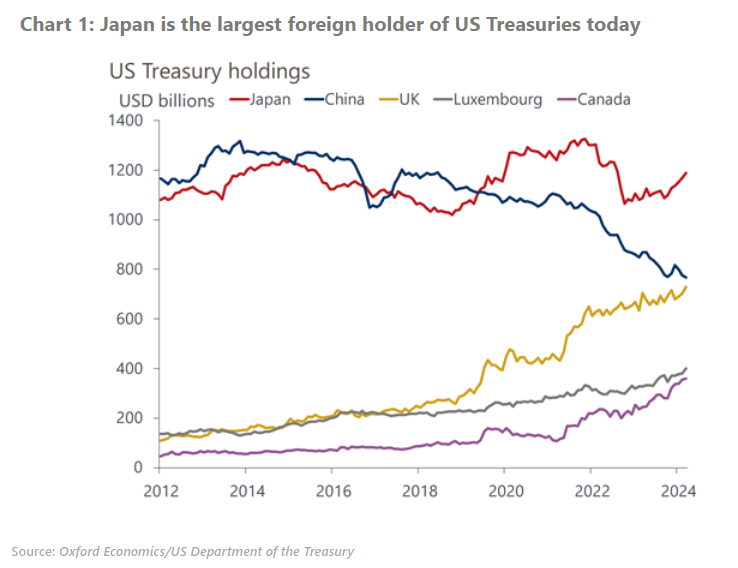The enduring appeal of US Treasuries to Japan’s investors
Some market participants are raising concerns over a fall in demand for US Treasuries from Japanese investors amid higher domestic yields. But we think that there will continue to be a large and stable investor base in Japan for US Treasuries due to the still-large yield gap. Also, uncertainty over the Bank of Japan’s monetary policy is dissuading investors from increasing their holdings of Japanese government bonds.
What you will learn:
- After a sharp drop in Japan’s US Treasuries holdings in 2022 as US yields rose, commercial banks restored their foreign bond portfolios in 2023. Pension funds have also maintained steady purchases in foreign bonds following their mid-term asset allocation. Life insurers are the only group to have continued to reduce foreign bond holdings as hedging costs have been elevated.
- We expect Japanese investors will increase their US Treasuries holdings gradually, following a turn in bond market trends and backed by persistent yen weakness. Even life insurers will likely resume their investments in US Treasuries without FX hedges probably in Q4 2024, while steering away from hedged bonds.
- We don’t think Japanese investors will shift their portfolio allocations to domestic assets any time soon, notwithstanding the recent pick-up in domestic yields. The expected total return of JGBs is still considerably lower than US Treasuries in yen terms. For lifer insurers in particular, the current 30-year JGB yield level is only slightly above average procurement interest rates of around 2%. In addition, expectations of a continued rise in yields fuelled by uncertainty in Japan’s monetary policy over the mid-term is precluding a swift return to JGBs by domestic investors.

Tags:
Related Posts


Post
BoJ likely to end zero interest rates in autumn
As expected, the BoJ maintained its policy rate at 0%-0.1% at Friday's meeting. With more confidence on the ongoing wage-driven inflation dynamics and a strong appetite for policy normalisation, the BoJ looks more likely to end its zero-interest rate policy in the autumn.
Find Out More
Post
How Asia’s supply chains are changing | Techonomics Talks
Global supply chains have continued to expand, despite talk of deglobalization and nearshoring. US and Japan have started to de-couple from China, but other G7 countries grow more dependent on Chinese inputs. Several "hotspots" are emerging across Asia with multiple winning formulas.
Find Out More